Wakarusa River Valley Heritage Museum
Introduction
Author-Uploaded Audio
Listen to Marin Massa, President of the Clinton Lake Historical Society, talk about the Wakarusa River Valley Heritage Museum's purpose.
Text-to-speech Audio
When the U.S. Army Corps of Engineers announced plans to dam the Wakarusa River and build Clinton Lake in 1972, many local residents feared their history would be washed away as the valley flooded. However, as a response to the threat of lost history, the Wakarusa River Valley Heritage Museum was established in 1983. The Wakarusa Museum aims to preserve the history of the Wakarusa River Valley region. The museum holds a large collection of family histories, photographs, and other related artifacts. Together, these collections bring to life the memory of ten interconnected rural communities located throughout the Wakarusa River Valley. These communities are Kanwaka, Stull, New Belvoir, Old Belvoir, Clinton, Bloomington, Sigel, Twin Mound, Richland, and Lone Star. Many of these communities were either demolished, flooded, or abandoned when the U.S. Army Corps of Engineers built Clinton Lake. According to the museum's website, the Wakarusa Museum is dedicated to, “the communities and the founding settlers for their perseverance of defending their staunch beliefs in difficult times."
Images
The Wakarusa River Valley Heritage Museum courtyard
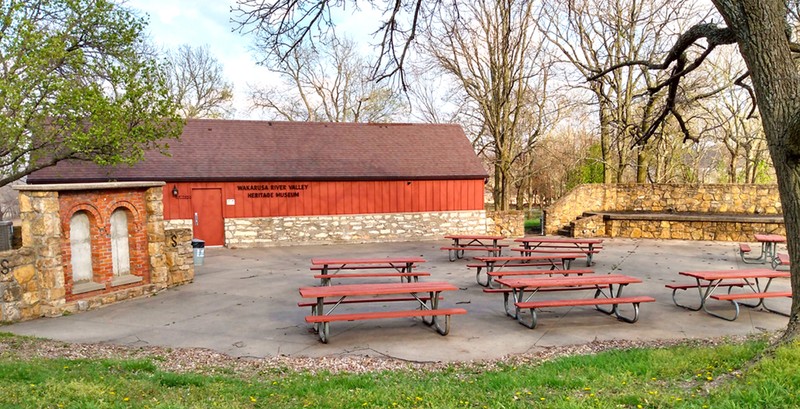
"Freedom Rings" sculpture. Each yellow ring represents a different Wakarusa River Valley community.
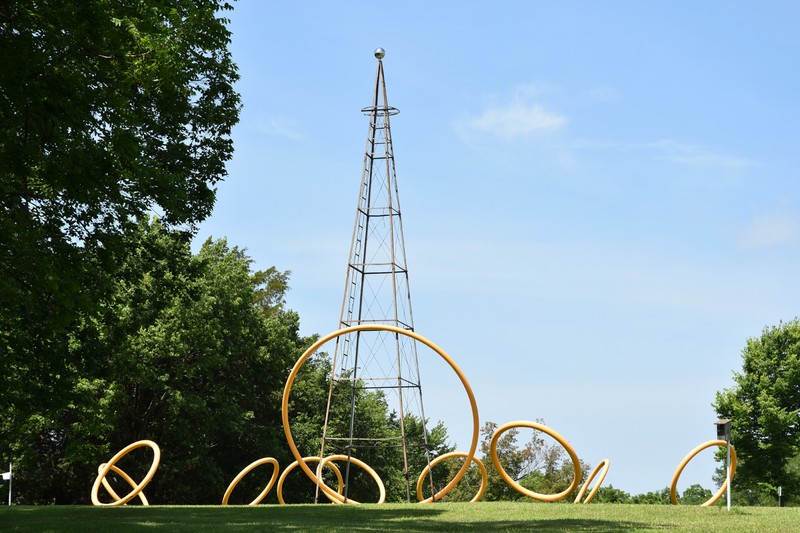
Construction of the Wakarusa River Valley Heritage Museum
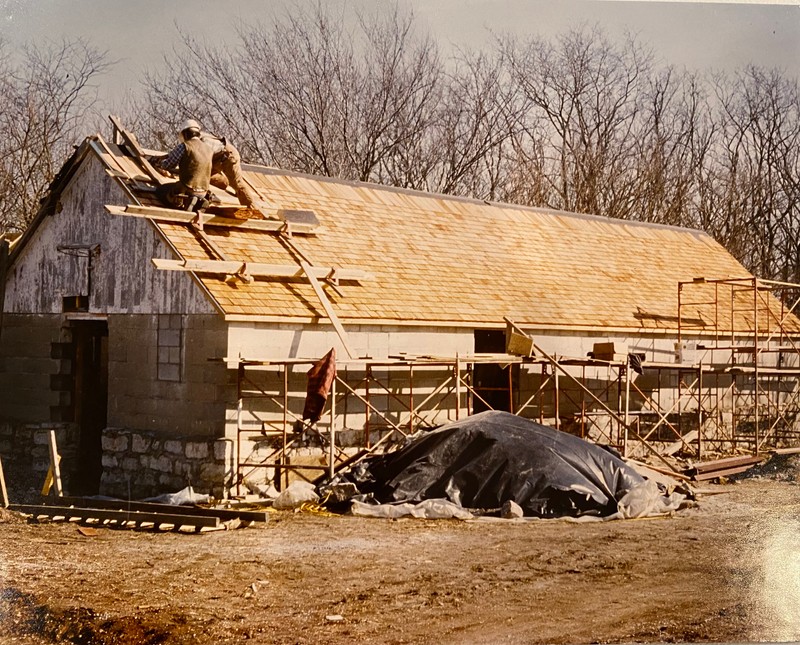
Lindy Cooper, supervisor of the Dismantling Crew, prepares the upper east windows of the J.C. Steele House for removal.
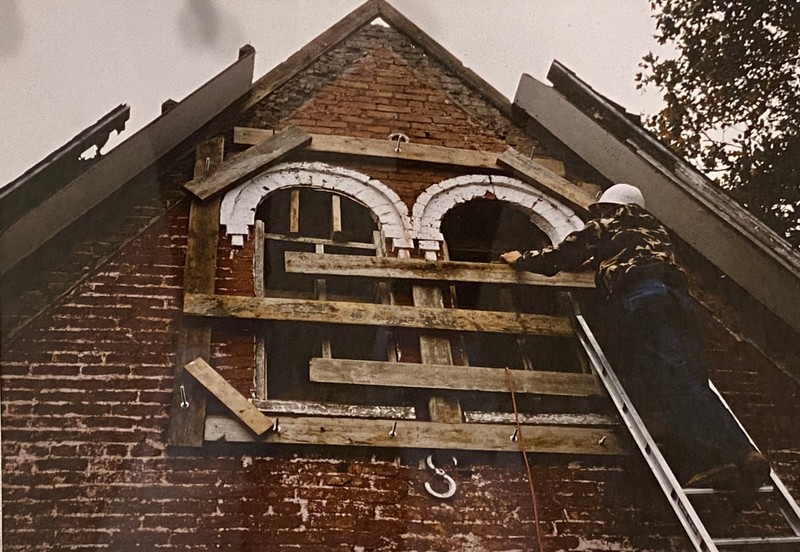
The original windows of the J.C Steele house removed during deconstruction. The Corps of Engineers carefully dismantled the Steele house in order to preserve certain pieces.
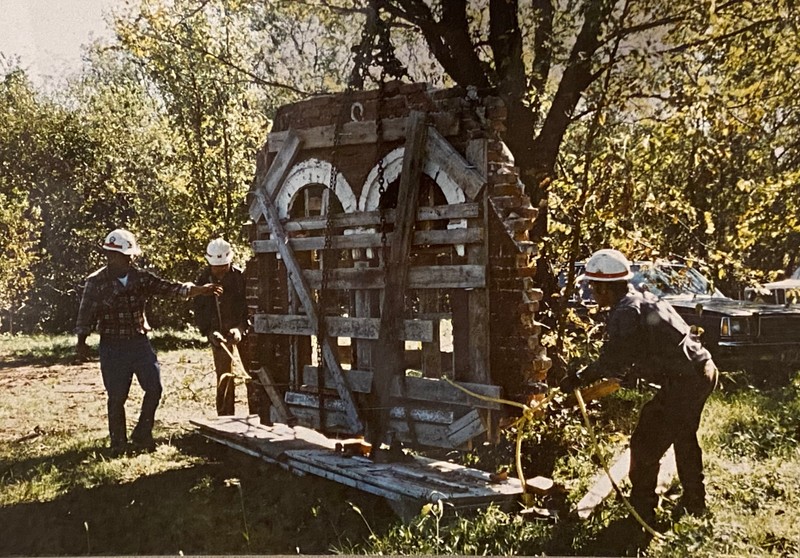
"Remembering Richland" exhibit display
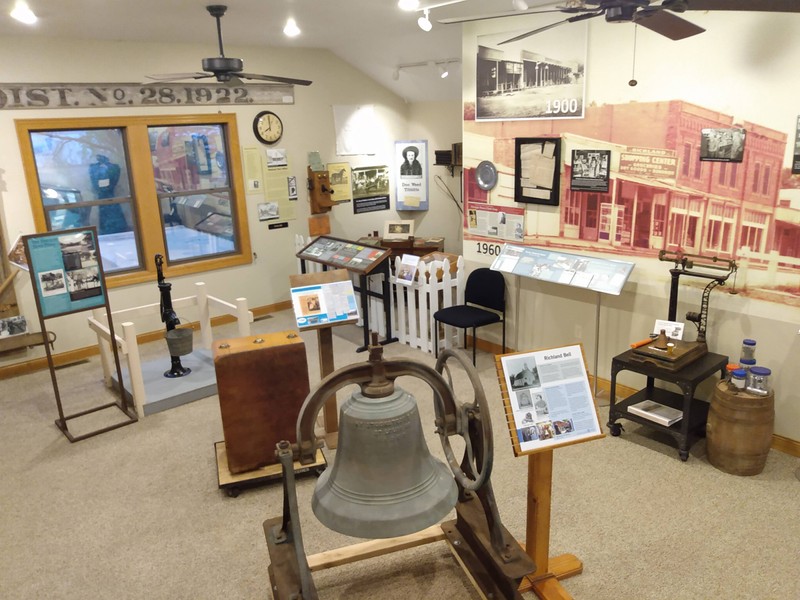
An event at the Wakarusa Museum in 2019
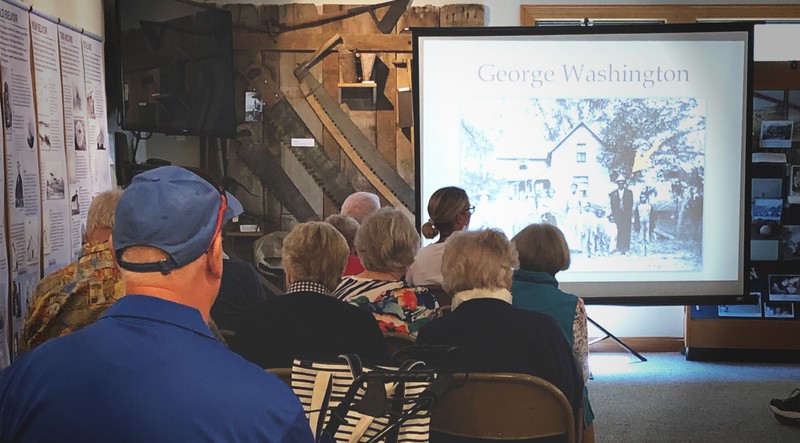
Ten community panels line the walls of the museum. Each individual panel provides the history of a specific Wakarusa River Valley community.
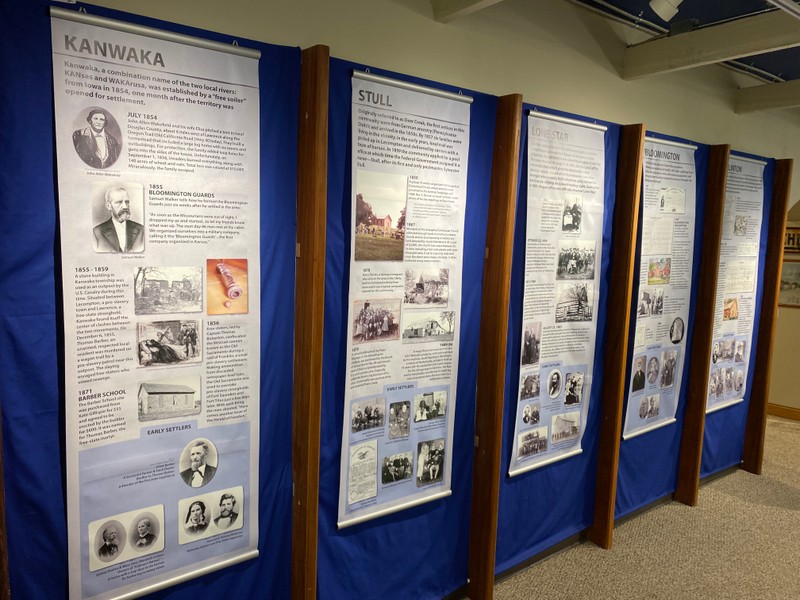
The "Angels of Freedom" exhibit display, which describes the role of the Underground Railroad within the Wakarusa region.
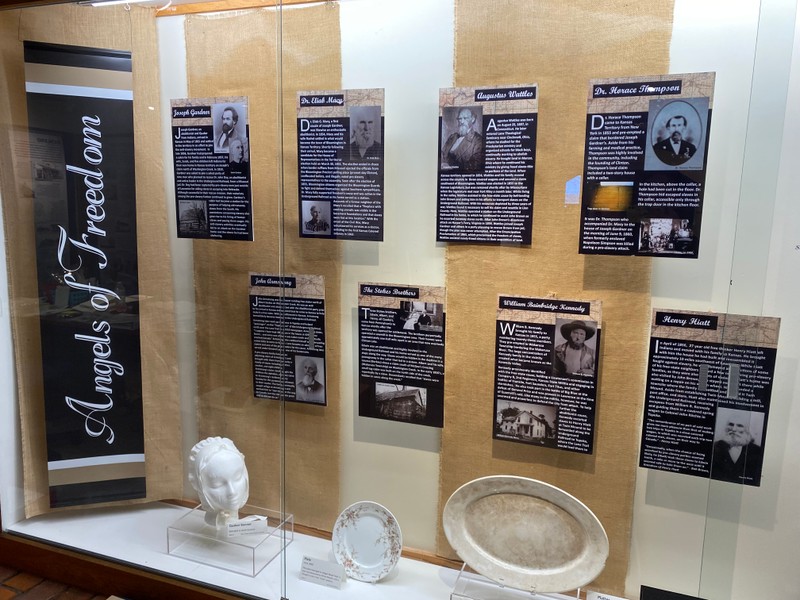
The front of the Wakarusa River Valley Heritage Museum building, which was originally a milk shed built in the 1930s.
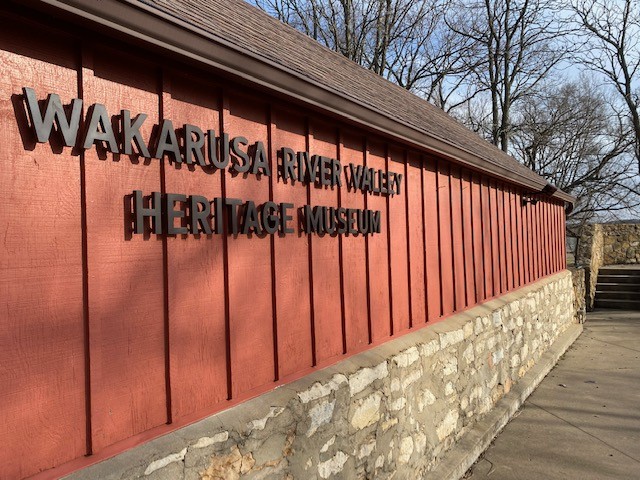
Backstory and Context
Author-Uploaded Audio
Listen to Marin Massa, President of the Clinton Lake Historical Society, describe what makes the Wakarusa River Valley Heritage Museum unique.
Text-to-speech Audio
The Flood Control Act, originally passed by Congress in 1917, directed the U.S. Army Corps of Engineers to begin evaluating issues of flood control along tributaries of the Mississippi River. This included the longest tributary of the Mississippi River, the Missouri River, which feeds the Kansas River. The Wakarusa River is a major tributary of the Kansas River. The Flood Control Act of 1962 authorized funding to dam the Wakarusa River and build Clinton Lake. Prior to the construction of Clinton Lake, the Wakarusa River was prone to frequent flooding. However, the Wakarusa communities were accustomed to annual floods, having dealt with the unpredictable and fearsome nature of the river for generations. Despite protests from many Wakarusa River Valley citizens, the Corps of Engineers began buying land as early as 1968 and construction of the Clinton Dam started in 1972.
Swift action on behalf of the Corps of Engineers prompted local residents of the Wakarusa region to form the Clinton Lake Landowners Association, which advocated for the landownership rights of Wakarusa River Valley citizens. An auxiliary group, the Clinton Lake Historical Society, was formed with the goal of gathering and preserving the region’s history, which many feared would be lost forever beneath the lake. Martha Parker, a lifetime resident of Clinton and an active community member, assumed a leadership role in both the Landowners Association and the Historical Society. Through her involvement, Parker and her colleague Betty Laird complied years of historical research into a book entitled Soil of Our Soils. This early work was published in 1976 and provided the foundation for the Wakarusa Museum.
The Wakarusa River Valley Heritage Museum, formerly the Clinton Lake Museum, currently occupies a renovated cow shed that once belonged to Bloomington resident Colonial James C. Steele. Originally, the Clinton Lake Historical Society planned to establish the Wakarusa Museum in Steele’s two-story red brick house. The house was built in 1865 by Steele, who used clay from the Wakarusa River to make the bricks. After acquiring the property in 1972, the Corps of Engineers announced plans to demolish the Steele House. However, after protest from nearly 200 Clinton Landowners Association members, the Corps of Engineers agreed to renovate the structure for public use as a museum. However, after years of inaction on behalf of the Corps, the J.C. Steele house was deemed “unsafe” for renovation. Rather than complete demolition, the Corps agreed to gently dismantle the Steele House and preserve certain fragments, which would later be incorporated into the renovation of the cow shed. Today, several pieces of the original Steel house, such as the windows, “S” shaped brick anchors, and red bricks can be found both inside and outside the Wakarusa Museum.
The long and complex history of the Wakarusa River Valley speaks to the region’s rural settlements, which are as old, if not slightly older, than the state of Kansas itself. The majority of the Wakarusa Museum’s documented history takes place during the Civil War era and the violent age known popularly as Bleeding Kansas. In this period, the Wakarusa River Valley was a battleground between abolitionists and pro-slavery settlers. The Wakarusa region also housed several stops along the Underground Railroad, including the homes of Ezekiel Colman in Kanwaka, Joseph Gardner in Lone Star, and Henry Hiatt in Twin Mound. Overall, the historic events and heroic characters of the Wakarusa River Valley are preserved with great pride in the Wakarusa Museum.
Today, the Wakarusa River Valley Heritage Museum is managed by the Clinton Lake Historical Society with additional help from volunteers. The museum features several permanent exhibits, such as the “Angels of Freedom,” and “J.C. Steele House” displays. In addition, the museum curates a new, temporary exhibition each season. The Wakarusa Museum also hosts a wide range of events and activities for both kids and adults. For more information, check out the museum’s Facebook page and website.
Sources
Parker, Martha. Interview by author. Lawrence, Kansas. January 30, 2023.
Parker, Martha. Angels of Freedom. Self-published. 1999.
Laird, Betty and Parker, Martha. Soils of Our Souls. Overbrook, Kan.: Freedom Publishing Company, 1976.
Papers of Carol Buhler Francis, "Clinton Lake Historical Society and Museum Prospectus." Folder 34, Box 2, RH MS 1022, Kenneth Spencer Research Library, University of Kansas
Marin Massa
Marin Massa
Wakarusa River Valley Heritage Museum photograph collection (1988.144)
Wakarusa River Valley Heritage Museum, "J.C. Steele House" exhibit photo
Wakarusa River Valley Heritage Museum, "J.C. Steele House" exhibit photo
Marin Massa
Marin Massa
Claire Cox
Claire Cox
Claire Cox
